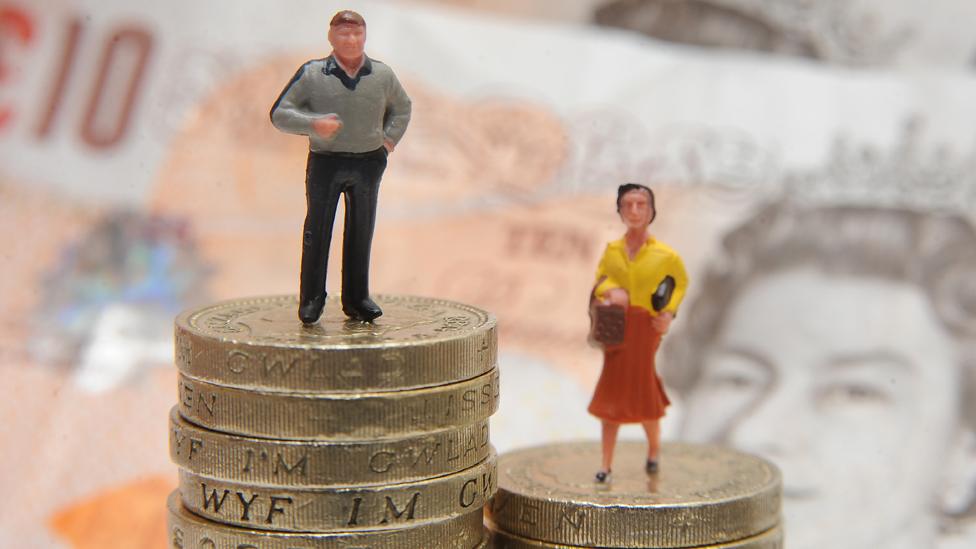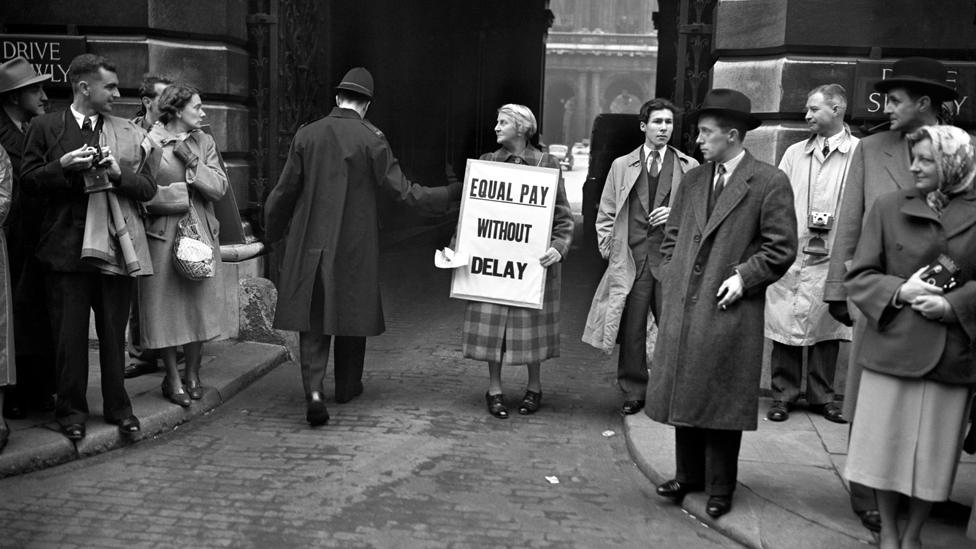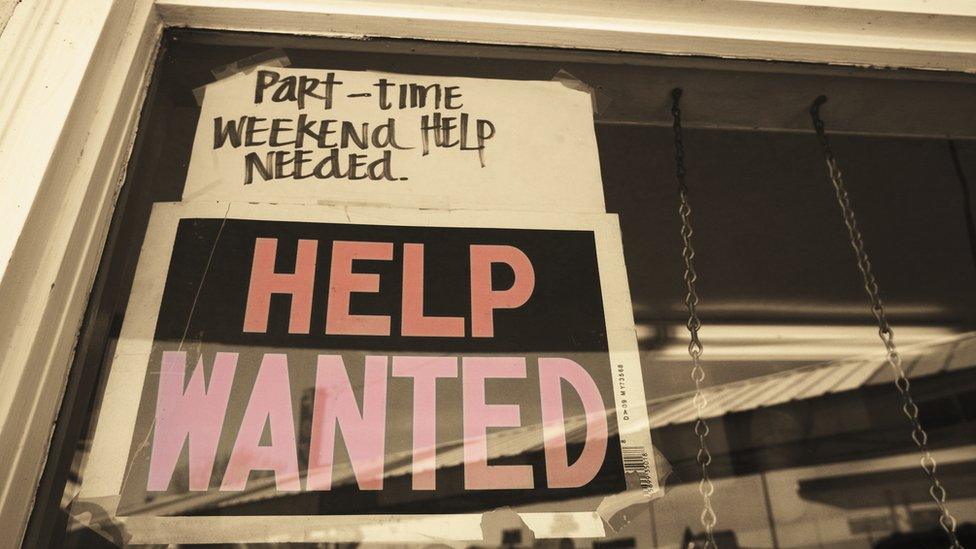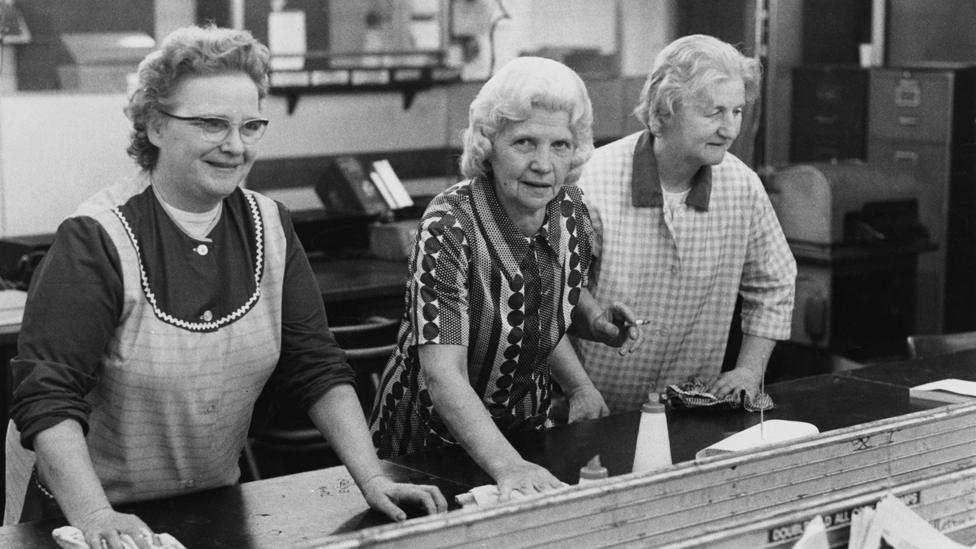Four ways the gender pay gap isn't all it seems
- Published

The Institute for Fiscal Studies has published a study that says, on average, men still get paid more than women. But some have questioned if that's really what the numbers show. So who's right?
The simple answer - it's complicated.
"Basically, the statistics on the gender pay gap are so various and so nuanced that almost anyone can take anything out of it and say what they want," says Sheila Wild, a former head of age and earnings inequality at the Equality and Human Rights Commission.
1. It's not just about discrimination
Firstly, we need to establish what the gender pay gap isn't.
Sometimes when people see "gender pay gap" they think it means women getting paid less for doing the same work as men. But women have a legal entitlement to equal pay for equal work.

There are no official figures on unequal pay. That's because it's only individual employers who really know if they're paying a woman and a man differently for doing the same work. And if they admitted they were doing that, they'd also be admitting that they'd broken the law.
"The gender pay gap includes equal pay," explains Wild, "but is actually much bigger than equal pay. And this is where people start to get confused, because unequal pay is about people being discriminated against."
So discrimination based on gender might contribute to the gender pay gap, but we don't know by how much.
2. It has a lot to do with working part-time

A much clearer factor behind the gender pay gap that the IFS found is the effect of part-time work.
Women are three times more likely to be part-time workers than men. One in seven men are part-timers compared to three in seven women.
That's important because part-time work, on average, attracts lower hourly rates.
"We have a full-time labour market where people behave and are treated in one way and a part-time labour market where people behave and are treated in a different way," says Wild.
It's not just that part-time workers get less because they work fewer hours. They actually get paid less per hour.

Find out more
The gender pay gap is discussed in this week's More or Less, broadcast on BBC Radio 4 and the World Service
Download the More or Less podcast
More stories from More or Less

In fact, if you look just at female workers, the part-timers are paid 32% less per hour than the full-timers.
So arguably, what we're talking about is a part-time wage gap. That contributes to a gender pay gap because women are more likely to be working part-time.
Some, like economist Professor Alison Wolf, say that to compare like-with-like, you should exclude part-time workers from your calculation and just look at men and women working full-time.
If you do that, the gender pay gap looks much smaller.
3. "Woman's work" is still a thing

Another reason that men, on average, get paid more than women is that more men tend to work in better-paid jobs.
It sounds like stereotyping - the notion that investment bankers are more likely to be male and nurses are more likely to be female. But it's not just a stereotype.
The official statistics back up the idea that there are more men in senior and managerial jobs and more women in lower-paid sectors, like caring and administration.
So that means if you look at everyone who works as one big lump and take an average, that will show women earning less than men.
But why do more women end up in worse-paid jobs?
"First of all, it's difficult to disentangle what is choice and what is forced choice," says Wild. "Most people's selection of their employment is determined by all sorts of things. It's determined by the national labour market - what sorts of jobs are available. It's determined by the local labour market. It's determined by your family circumstances.
"And then on the other side of that, there's employer selection and the well-known phenomenon of people appointing in their own image."
Of course, culture plays a role too - what our society sees as appropriate jobs for men and appropriate jobs for women.
4. It depends a lot on your age

Looking at the gender pay gap as an average for everyone who works is a bit like asking what number of grandchildren the average person has. Once you start breaking the answers down into different age groups, you get very different pictures.
If we take the official figures on the gender pay gap, it's much larger for women in their 50s, at 27%, than it is for women in their 20s, who are paid 4% less than the average man in their age group.
Strip out the part-time workers, and the gap pretty much disappears for women aged 22 to 39.
And the situation also varies depending on when you were born. So the age gap for a 35-year-old now is less than it was for a 35-year-old a decade ago.
If we again look just at full-time workers, the gap has been getting smaller for pretty much everyone - except for the over-50s.
While a 35-year-old woman currently working full-time might earn the same as a man of her age now, she may find that in 15 years' time it's a different story.
So, when it comes to the gender pay gap, the numbers you get depend on the question you ask.
Follow @BBCNewsMagazine, external on Twitter and on Facebook, external